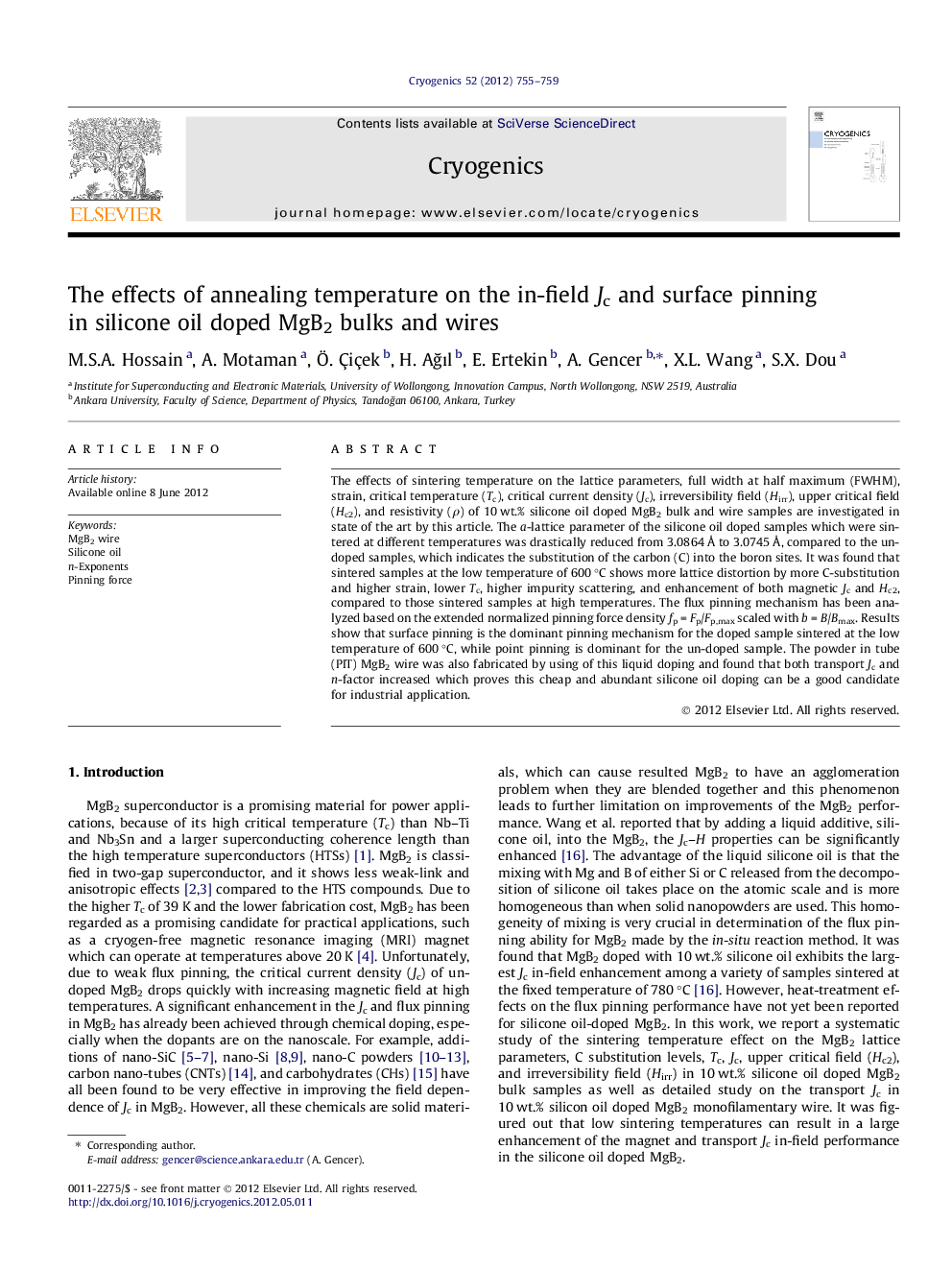| Article ID | Journal | Published Year | Pages | File Type |
|---|---|---|---|---|
| 1507745 | Cryogenics | 2012 | 5 Pages |
The effects of sintering temperature on the lattice parameters, full width at half maximum (FWHM), strain, critical temperature (Tc), critical current density (Jc), irreversibility field (Hirr), upper critical field (Hc2), and resistivity (ρ) of 10 wt.% silicone oil doped MgB2 bulk and wire samples are investigated in state of the art by this article. The a-lattice parameter of the silicone oil doped samples which were sintered at different temperatures was drastically reduced from 3.0864 Å to 3.0745 Å, compared to the un-doped samples, which indicates the substitution of the carbon (C) into the boron sites. It was found that sintered samples at the low temperature of 600 °C shows more lattice distortion by more C-substitution and higher strain, lower Tc, higher impurity scattering, and enhancement of both magnetic Jc and Hc2, compared to those sintered samples at high temperatures. The flux pinning mechanism has been analyzed based on the extended normalized pinning force density fp = Fp/Fp,max scaled with b = B/Bmax. Results show that surface pinning is the dominant pinning mechanism for the doped sample sintered at the low temperature of 600 °C, while point pinning is dominant for the un-doped sample. The powder in tube (PIT) MgB2 wire was also fabricated by using of this liquid doping and found that both transport Jc and n-factor increased which proves this cheap and abundant silicone oil doping can be a good candidate for industrial application.
► Silicone oil addition enhances the flux pinning mechanism leading to higher Jc’s. ► 600 °C can lead to a reduction of the lattice parameters and RRR values. ► Significant enhancement of Hc2, Hirr. ► In-field magnetic and transport Jc–H are observed to increase. ► Enhancement of n-value are also observed in the sample sintered at 600 °C.
